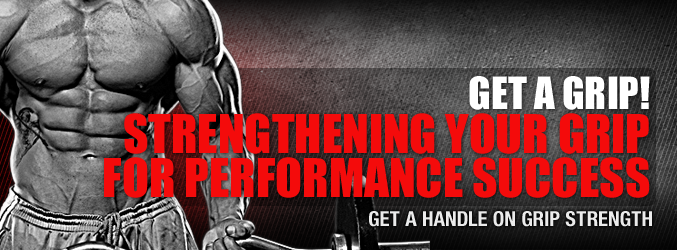
Most standard training protocols divide the body into muscle groups, leaving 1-3 muscle groups which are targeted with each training day. Included are chest days, back days, leg days – with secondary muscle groups like biceps, shoulders and calves enjoying a 2nd slot on a bigger muscle group training day.
Along the way, lifters usually neglect forearm or grip training. Let’s look at some of the questions that arise when training grip is brought to the lifter’s attention.
What are the benefits of having a strong grip?
There are two ways possessing a strong grip will help you – and they match the two main goals of lifting. First off, you want to enjoy complete physical development.
Nothing destroys a bodybuilding pose faster than underdeveloped forearms. Develop the grip and your forearm muscles will look impressive in poses, leaving you in the winners’ circle. Secondly, any lack of development in the grip department will leave you weaker than you want to be when it comes to performing many of the heavy lifts, such as deadlifts and shrugs.
Additionally, strong grip strength will also benefit the lifter in other lifts not traditionally thought to be related to grip strength, such as the bench press. Weak hands and forearms will cause you to halt a set before you’ve reached muscular failure, rendering the set useless for making new muscle and strength gains.

What can I do to improve my grip?
First you should realize there are actually FOUR types of grip. Let’s take a look at each of them, and learn how you can improve grip strength on each.
Wrist Strength Anytime you use level bar lifts or wrist curls, you are building up your wrist strength. A great deal of visually useful forearm muscle is also developed when completing these exercises.
Supportive Grip If you’re familiar with the “farmer’s walk” exercise, then you’re familiar with the supportive grip. Targeted by holding a simple barbell and walking with it, the supportive grip is useful in shrugs, deadlifts, rows, and a handful of other upper body exercises.
Pinch Grip Targeted by holding 2 weight plates together, with the flat side out, hanging at your side for as long as possible, this type of grip involves the development of strong thumb muscles. Start light with 2 five-pound plates per side, and work your way up to using two 45-pound plates.
Crushing Grip Targeted with the use of a hand gripper, this is the kind of grip you would use if you were crushing a soda can, for example. This grip is very useful for improved performance on back and biceps movements.
How can having limited grip strength hinder my progress in the weight room?
Very often, a lifter will have to stop an exercise BEFORE he or she has achieved the desired muscular failure in the targeted muscle group, because the grip fails. Imagine going for a personal record in deadlifts and while your back might be up for another few repetitions, your hands are not, and you have to end the set. Don’t shortchange your overall physical development by allowing any weak links in the chain. Train your grip weekly and ensure a weak grip will never stop you from reaching peak performance in the gym. Good luck!


